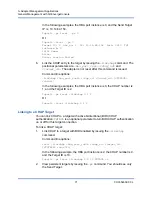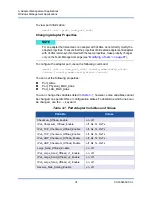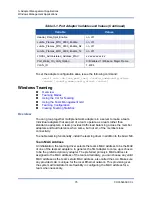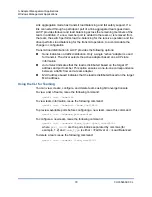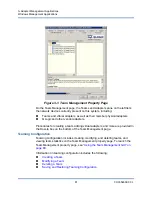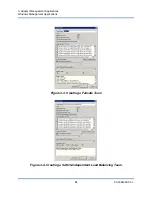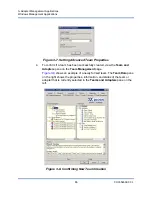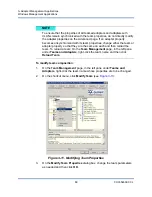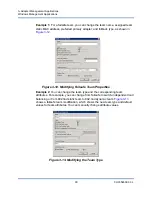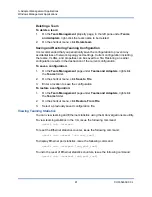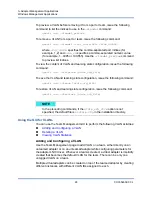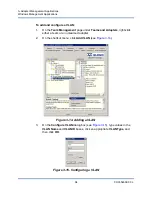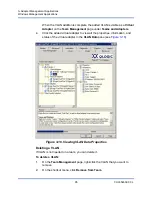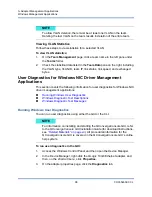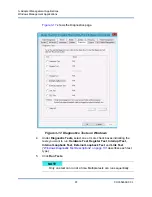
3–Adapter Management Applications
Windows Management Applications
83
CU0354602-00 L
Type
—Select the teaming mode by clicking either
Failsafe Team
,
802.3ad Static Team
,
802.3ad Dynamic Team
, or
Switch
Independent Load Balancing
. If you select the 802.3ad dynamic
option, you must also select one of the following options:
Active LACP
: LACP is a Layer 2 protocol that is used control the
teaming of physical ports into an aggregated set. LACP
discovers if a host’s ports are connected to a switch that supports
aggregation on the connected ports and configures those ports
into an aggregation bundle. For LACP to operate, one side has to
be Active LACP. The active LACP side of the protocol initiates
the protocol.
Passive LACP
: The passive LACP side just responds to the
active LACP requests.
Adapters to Add
—Select the check box next to each adapter that
should form the team.
Use default MAC Address
—Select this check box to have the driver
assign a MAC address, or clear the check box to select a locally
administered MAC address from the list.
Failback Delay
—Type the failback delay in seconds.
Select Preferred Primary Adapter
—Choose a preferred primary
adapter for the team from the list of teamed adapters or
None
to allow
the driver to assign the preferred primary adapter.
Failback Type
—If this is a Failsafe Team, select a failback type of
either
None
,
Auto Select
, or
Preferred primary
.
Load Balancing Type
—If this is an 802.3ad Static Team or 802.3ad
Dynamic Team, select the type of load balancing:
Auto
,
MAC Address Based
, or
None
.
Distribution Type
—If this is a Switch Independent Load Balancing
team type, select a distribution type of either
Auto Select
or
MAC Address Based
.
Advanced
—Click this button to configure QLogic-specific team
capabilities such as RSS, MTU, or various offloads. These properties
are used to configure the member adapters to avoid any conflict after a
team has been created.
Figure 3-7
shows the
Advanced Team
Properties
dialog box.
The following figures show the configuration of various teaming modes.



